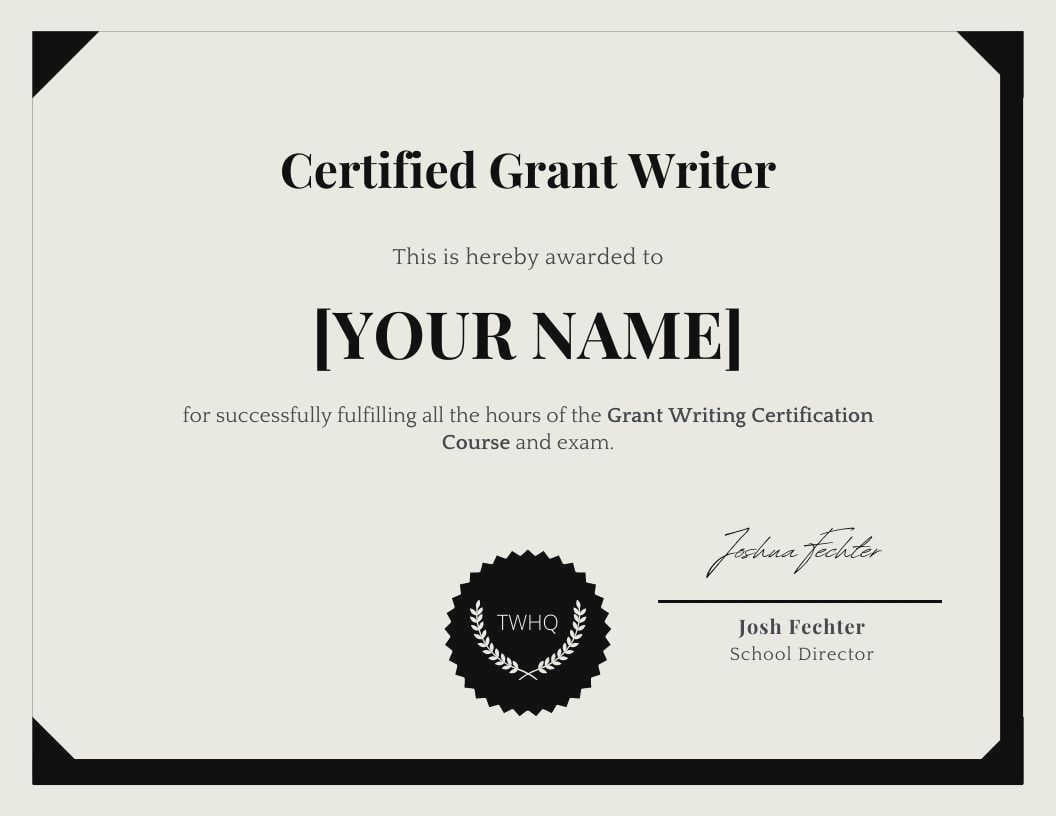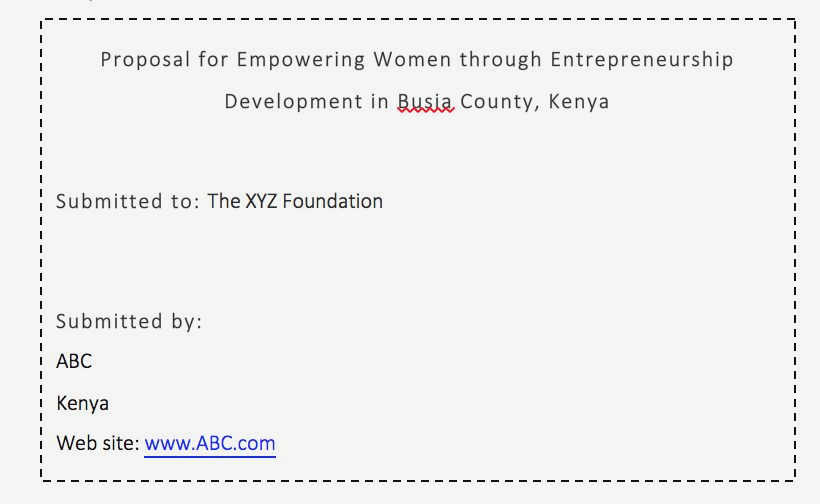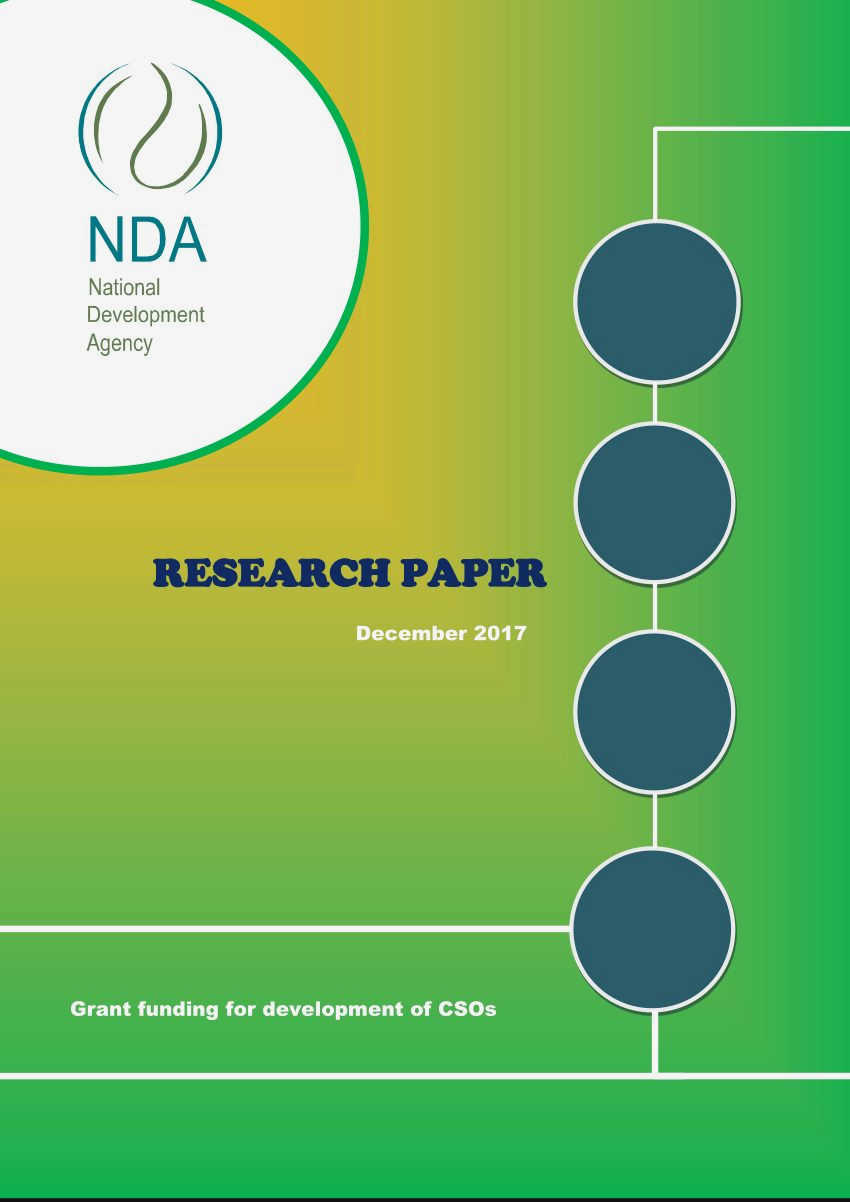Raising funds for a civil society organization is no small feat. It requires a comprehensive understanding of the grant writing process and a strategic approach to securing funding. In today’s competitive landscape, organizations must effectively communicate their mission, goals, and impact to potential funders in order to stand out from the crowd.
Grant writing is an art that involves crafting a compelling proposal that convinces funders to invest in your cause. It requires careful planning, research, and attention to detail. Successful grant writing involves not only clearly articulating your organization’s objectives and strategies, but also demonstrating the need for your project and the impact it will have on the community.
When writing a grant proposal, it is important to emphasize the unique value your organization brings to the table. Highlight your organization’s track record of success, partnerships, and collaborations to demonstrate your credibility and ability to effectively implement projects. Additionally, clearly define the target audience and the specific needs that your project will address.
"To secure funding, it is essential to tailor your grant proposal to the specific funding opportunity."
Funding organizations have different priorities and requirements, so it is crucial to thoroughly read and understand the guidelines before you start writing. Pay attention to the selection criteria, eligibility requirements, and the funding organization’s strategic focus areas. By aligning your proposal with the funding organization’s objectives, you increase your chances of securing funding.
Understanding the Importance of Grants for Your Cause
Grants play a crucial role in supporting and advancing the causes of civil society organizations. These funding opportunities provide financial resources that can significantly contribute to the success of various projects and initiatives. With limited financial resources, many organizations struggle to implement their vision and make a meaningful impact. Grants help bridge that gap by providing the necessary funding to execute plans and achieve goals.
Securing grants is particularly important for civil society organizations due to their unique role in addressing social, environmental, and community-based issues. These organizations often operate in areas where government support may be inadequate, making external funding sources, such as grants, crucial for their sustainability.
Grants not only provide financial support, but they also bring credibility and recognition to the organization. When an organization receives a grant, it validates their work and demonstrates that they have been recognized by experts or institutions in the field. This recognition can help attract other funders, partners, and volunteers, as well as enhance the organization’s reputation and visibility.

Moreover, grants allow organizations to leverage additional resources and expand their impact. Many grants require matching funds or in-kind contributions, which encourages organizations to seek additional support and collaborate with other stakeholders. This collaborative approach often leads to more comprehensive projects and leverages the strengths and expertise of multiple organizations.
Grants also provide the opportunity for capacity building within organizations. The application process itself helps organizations clarify their goals, develop strategic plans, and refine their program design. By going through the grant writing process, organizations improve their ability to communicate their mission, objectives, and impact, thus enhancing their overall effectiveness.
Overall, grants are essential for the sustainability and growth of civil society organizations. They provide the financial resources, credibility, and collaborative opportunities necessary for organizations to address pressing issues, make a positive impact, and create lasting change.
Identifying Funding Opportunities and Researching Grant Providers
When it comes to securing funding for your civil society organization, identifying the right funding opportunities and researching grant providers is crucial. This process involves thoroughly understanding your organization’s needs, goals, and projects, and finding grant opportunities that align with your mission and objectives.
Assessing Your Organization’s Funding Needs and Goals
Before starting your search for grant providers, it’s important to assess your organization’s funding needs and goals. This involves analyzing your current financial situation, identifying any gaps in funding, and setting realistic fundraising targets. By understanding your organization’s priorities and financial requirements, you can narrow down your search and focus on grant opportunities that are most relevant.
Researching Grant Providers
Once you have a clear understanding of your organization’s funding needs and goals, it’s time to start researching potential grant providers. This can be done through various channels, such as online databases, government agencies, and philanthropic organizations. It’s important to carefully review each grant provider’s eligibility criteria, funding priorities, and application process to ensure that your organization meets the requirements and has a strong chance of success.
Additionally, consider reaching out to colleagues or other organizations in your field for recommendations or networking opportunities. Building relationships with existing grant providers or other organizations in your sector can provide valuable insights and potentially lead to funding opportunities.
Creating a Grant Proposal
After identifying potential grant providers, the next step is to create a compelling grant proposal. This involves clearly articulating your organization’s mission and objectives, showcasing the impact of your previous work, and demonstrating how the grant funds will be used effectively. It’s important to tailor your proposal to each grant provider, highlighting how your project aligns with their funding priorities and addressing any specific requirements outlined in their guidelines.
Remember, securing funding for your cause requires diligence, patience, and skillful grant writing. By identifying the right funding opportunities and carefully researching grant providers, you can increase your chances of securing the financial support needed to make a positive impact in your community.
Writing an Effective Grant Proposal: Key Components and Tips
1. Executive Summary
Start your grant proposal with a clear and concise executive summary that outlines the main objectives and goals of your project. Make sure to highlight the problem you are addressing, the target population you are serving, and the expected outcomes.
2. Introduction
In the introduction, provide background information on your organization and its mission. Explain why your project is important and how it aligns with the funder’s priorities. Use compelling language and statistics to grab the reader’s attention and make a strong case for your proposal.
3. Problem Statement
Clearly articulate the problem or need that your project aims to address. Provide relevant data and evidence to support your claims. Describe the impact of the problem on the target population and the community as a whole. This will help the funder understand the urgency and significance of your project.
4. Goals and Objectives
Outline the specific goals and objectives of your project. Make sure they are measurable and achievable. Break them down into clear and concrete steps or milestones. This will demonstrate your ability to plan and implement the project effectively.
5. Methods and Strategies
Explain the methods and strategies you will use to achieve your goals and objectives. Provide a detailed description of the activities and interventions you will undertake. Highlight any innovative or evidence-based approaches you will utilize. This will showcase your expertise and enhance your credibility.
6. Evaluation plan
Outline your evaluation plan to measure the impact and effectiveness of your project. Identify the key indicators you will track and the data collection methods you will use. Make sure your evaluation plan is realistic and aligned with your goals and objectives. This will show the funder that you are committed to measuring and improving the outcomes of your project.
7. Budget and Financial Information
Create a detailed budget that includes all the costs associated with your project. Break down the expenses into categories and provide a justification for each item. Make sure your budget is realistic and aligned with your project’s goals and objectives. Include any additional sources of funding or in-kind contributions. This will demonstrate your financial management skills and the sustainability of your project.
8. Sustainability Plan
Describe how you will sustain your project beyond the grant period. Explain your plans for securing additional funding and resources. Showcase any partnerships or collaborations you have established. Emphasize your organization’s capacity and commitment to long-term success. This will assure the funder that their investment will have a lasting impact.
In conclusion, writing an effective grant proposal requires careful planning and attention to detail. By including the key components mentioned above and following these tips, you can increase your chances of securing funding for your cause.
Crafting a Compelling Narrative: Telling Your Organization’s Story
1. Know Your Audience
When crafting a compelling narrative for your organization, it is important to consider your audience. Who are you trying to reach? What are their interests and values? Understanding your audience will help you tailor your story to resonate with them and increase your chances of securing funding.
2. Start with a Strong Opening
Begin your narrative with a powerful opening that grabs the attention of your reader. This could be a compelling statistic, a personal anecdote, or a thought-provoking question. The goal is to captivate your audience and make them want to continue reading.
3. Highlight the Problem
Clearly define the problem that your organization is addressing. Use data and evidence to demonstrate the significance of the issue and explain why it is important to take action. This will help create a sense of urgency in your narrative and illustrate the impact that your work can have.
4. Showcase Your Organization’s Impact
Share success stories and case studies that demonstrate the positive impact your organization has had on individuals and communities. Use concrete examples to show how your work has made a difference and why it is worthy of funding. This will help build credibility and inspire confidence in your organization.

5. Convey Your Organization’s Vision and Values
Clearly articulate your organization’s mission, vision, and values. Explain why your cause is important to you and why you are passionate about making a difference. This will help establish an emotional connection with your audience and inspire them to support your organization.
6. Make a Clear and Compelling Ask
End your narrative with a clear and compelling ask for funding. Be specific about how much funding you need and how it will be used. Explain how the funding will help further your organization’s mission and achieve its goals. Provide contact information and any relevant deadlines for submitting funding proposals.
In conclusion, crafting a compelling narrative for your organization is essential for securing funding. By knowing your audience, starting with a strong opening, highlighting the problem, showcasing your organization’s impact, conveying your vision and values, and making a clear and compelling ask, you can create a persuasive narrative that resonates with funders and increases your chances of securing the funding you need to make a difference.
Developing a Strong Budget and Financial Plan
1. Understand your organization’s financial needs and goals
Before developing a budget and financial plan, it is important to have a clear understanding of your organization’s financial needs and goals. Assess your existing financial situation, including sources of income and expenses, and identify any gaps or areas that need improvement. Consider your short-term and long-term financial goals and how they align with your organization’s mission and strategic objectives.
2. Determine your funding sources
Identify the various sources of funding available to your organization. This can include government grants, private foundations, corporate sponsorships, individual donations, and fundraising events. Research each potential funding source to understand their funding criteria, application process, and any restrictions or requirements. Prioritize the sources that are the best fit for your organization’s mission and target audience.
3. Create a detailed budget
Develop a comprehensive budget that includes both the income and expenses for your organization. Start by listing all the sources of income, such as grants, donations, and earned income. Then, outline your organization’s expenses, including salaries, office rent, utilities, program costs, and administrative expenses. Be sure to allocate funds for each program or project separately and account for any contingency or unforeseen expenses.

4. Justify your budget
Provide a clear and concise explanation for each item in your budget, demonstrating how it aligns with your organization’s goals and objectives. Justify the need for the requested funds, citing specific program activities, expected outcomes, and the impact it will have on your target audience or community. Support your budget with relevant data and evidence, such as market research or program evaluations, to strengthen your case for funding.
5. Ensure transparency and accountability
Include a section in your financial plan that outlines your organization’s financial policies and procedures. This should cover topics such as financial reporting, internal controls, and conflict of interest policies. Be transparent about how the funds will be managed and accounted for, and demonstrate your commitment to maintaining strong financial oversight. Consider including a summary of your organization’s financial history and any audited financial statements, if available.
6. Monitor and evaluate your financial plan
Regularly review and evaluate your budget and financial plan to ensure they are still aligned with your organization’s goals and objectives. Monitor your income and expenses to identify any discrepancies or areas that need adjustment. Conduct periodic financial audits or evaluations to ensure compliance with funding requirements and to identify any areas for improvement. Adjust your financial plan as needed to adapt to changing circumstances or to take advantage of new funding opportunities.
Addressing Evaluation and Impact: Demonstrating the Effectiveness of Your Programs
Evaluation and impact assessment are essential components of grant writing for civil society organizations. When seeking funding for your cause, it is important to demonstrate the effectiveness of your programs and how they are making a difference in the community.
Evaluating Program Outcomes
To effectively demonstrate the impact of your programs, it is crucial to develop a comprehensive evaluation plan. This plan should outline the desired outcomes and objectives of your programs and the methods you will use to measure their success.
Consider implementing mixed methods evaluation approaches, such as surveys, interviews, and observation, to gather both quantitative and qualitative data. This will provide a well-rounded understanding of the impact your programs are making.
Measuring Social and Community Impact
When addressing the impact of your programs, it is important to look beyond individual outcomes and consider the broader social and community impact. This can include changes in public policy, increased awareness and advocacy, and improved social cohesion within the community.
Use data and evidence to demonstrate how your programs have contributed to positive changes in the community. This can be done through case studies, testimonials, and data analysis that show the specific outcomes and improvements brought about by your interventions.
Building a Culture of Learning and Improvement
Grant funders are not only interested in the immediate impact of your programs, but also in your organization’s commitment to learning and continuous improvement. Show that you have a robust process for monitoring and evaluating your programs, and that the data collected is used to inform programmatic decisions and improve outcomes.
Consider implementing regular feedback mechanisms, such as participant surveys or stakeholder consultations, to gather input and incorporate it into your programs. This demonstrates your organization’s dedication to responsiveness and ensures that your programs are meeting the needs of the community.
Overall, effective grant writing for civil society organizations requires a strong focus on evaluation and impact assessment. By demonstrating the effectiveness of your programs in addressing community needs and achieving positive outcomes, you increase your chances of securing funding for your cause.
Communicating Collaboration and Partnerships
Highlighting Strategic Partnerships
When writing a grant proposal, it is important to effectively communicate the collaborative efforts and partnerships that your organization has established. Highlighting strategic partnerships demonstrates to funders that your organization is committed to maximizing resources and expertise to achieve your goals.
For example: We have formed a partnership with a local university’s research department to provide in-depth data analysis and evaluation strategies for our project. This strategic collaboration enhances the quality of our work and ensures that our outcomes are evidence-based.
Describing Coordinated Efforts
Clearly describing the coordinated efforts between your organization and its partners can also strengthen your grant proposal. Explain how various organizations will work together, share responsibilities, and leverage their strengths to achieve common objectives.
For instance: Our project involves a coordination effort with several community-based organizations that specialize in different aspects of the issue at hand. One organization will focus on outreach and community engagement, while another will provide training and capacity building. By working together, we can address the issue comprehensively and maximize the impact of our interventions.

Providing a Track Record of Successful Collaborations
Another effective strategy for communicating collaboration and partnerships is to provide a track record of successful collaborations in previous projects. This shows funders that your organization has a history of working effectively with partners and can be trusted to deliver results.
For instance: In past projects, we have successfully collaborated with local government agencies, nonprofit organizations, and community groups to implement programs that have improved educational outcomes for underserved youth. Our ability to foster and maintain strong partnerships has been critical to the success of these initiatives.
Showing Commitment to Ongoing Collaboration
Finally, it is important to demonstrate your organization’s commitment to ongoing collaboration. This can be done by outlining plans for regular meetings, joint decision-making processes, and long-term sustainability strategies.
For example: We have established a collaborative task force comprised of representatives from all partner organizations. This task force will meet on a monthly basis to review progress, make collective decisions, and ensure that the collaborative effort remains strong even after the initial funding period.
In summary, effectively communicating collaboration and partnerships in your grant proposal can significantly enhance your chances of securing funding. By highlighting strategic partnerships, describing coordinated efforts, providing a track record of successful collaborations, and showing a commitment to ongoing collaboration, you can demonstrate to funders that your organization is well-positioned to achieve meaningful impact.
Securing Grant Funding: Tips for Successful Applications
1. Research and Identify Funding Opportunities
Before applying for grant funding, it is essential to thoroughly research and identify potential funding opportunities that align with your organization’s goals and objectives. Look for grants that specifically support your cause or target population. Utilize online databases, grant directories, and networking events to find relevant funding sources.
2. Understand the Funder’s Priorities
Each funder has its own priorities and specific areas of interest. Take the time to understand the funder’s objectives, guidelines, and funding criteria. Tailor your application to align with these priorities, emphasizing how your project or initiative addresses the funder’s goals. This demonstrates that you have done your homework and increases your chances of securing funding.
3. Develop a Strong Project Proposal
Craft a clear and compelling project proposal that clearly outlines the problem you are addressing, the goals and objectives of your project, and the expected outcomes and impact. Include a detailed budget, timeline, and a well-defined evaluation plan. Use data and evidence to support your claims and demonstrate the need for your project. Make sure to highlight the unique aspects of your organization and its capacity to successfully implement the project.
4. Build Strong Relationships
Building strong relationships with potential funders can significantly increase your chances of securing grant funding. Attend networking events, conferences, and workshops to connect with potential funders and establish credibility and trust. Engage in meaningful conversations, listen actively, and follow up with personalized thank-you notes or emails. These relationships can lead to valuable insights, partnerships, and potential funding opportunities.
5. Submit a Complete and Well-Organized Application
When submitting your grant application, ensure that all required documents and supporting materials are included and well-organized. Pay close attention to the funder’s guidelines and provide all the requested information. Use clear and concise language, avoiding jargon or technical terms that may be unfamiliar to the reviewers. Proofread your application multiple times to avoid any grammatical or spelling errors.
6. Follow Up and Feedback
After submitting your grant application, follow up with the funder to confirm receipt and inquire about the timeline for decision-making. If your application is successful, express gratitude and promptly provide any additional information or documentation requested by the funder. In case of rejection, ask for feedback to improve future applications. Use this feedback to refine your proposal and increase your chances of success in future funding opportunities.
By following these tips, you can enhance your chances of securing grant funding for your civil society organization. Approach the process diligently, use effective communication strategies, and continuously learn and improve based on feedback and experience.

Best Practices in Grant Management for Civil Society Organizations
Effective grant management is crucial for the success and sustainability of civil society organizations. It involves the careful planning, implementation, and monitoring of grants to ensure that funds are used efficiently and effectively to achieve the organization’s objectives. Here are some best practices in grant management:
1. Clear and Strong Grant Proposal:
A well-written and compelling grant proposal is the first step in effective grant management. It should clearly articulate the organization’s mission, goals, and objectives, and demonstrate the need for funding. The proposal should also outline a detailed budget and timeline to give the grantmaker confidence in the organization’s ability to execute the project successfully.
2. Strong Financial Systems:
A strong financial management system is essential for grant management. It involves establishing clear financial policies and procedures, ensuring accurate and timely financial reporting, and maintaining proper documentation of expenses. This helps to ensure transparency and accountability in the use of grant funds.
3. Regular Monitoring and Evaluation:
Regular monitoring and evaluation are essential to ensure that grant-funded projects are on track and meeting their objectives. This involves setting clear performance indicators, collecting data to measure progress, and conducting periodic reviews to identify any challenges or areas for improvement. Monitoring and evaluation help to ensure that funds are being used effectively and that the organization is making a positive impact.
4. Effective Communication with Grantmakers:
Open and effective communication with grantmakers is crucial for successful grant management. This involves regular updates on project progress, timely reporting on the use of funds, and proactive communication about any changes or challenges. Building strong relationships with grantmakers helps to ensure their continued support and can lead to future funding opportunities.
5. Compliance with Legal and Ethical Standards:
Civil society organizations must adhere to legal and ethical standards in grant management. This includes compliance with applicable laws and regulations, ensuring proper use of funds, and maintaining the highest standards of integrity and transparency. Adhering to these standards helps to build trust with grantmakers and the wider community.
By following these best practices in grant management, civil society organizations can increase their chances of securing funding, maximize the impact of their projects, and build strong relationships with grantmakers. Effective grant management is key to achieving long-term sustainability and making a lasting difference in the communities they serve.





